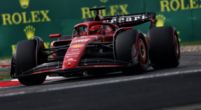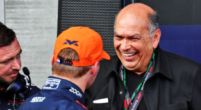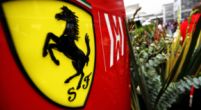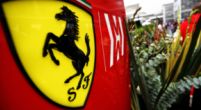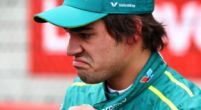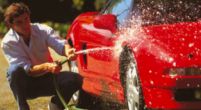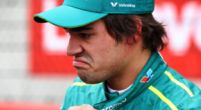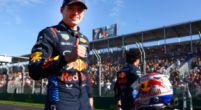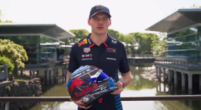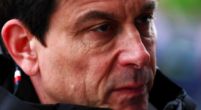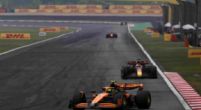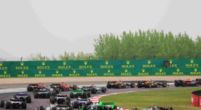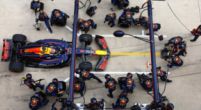VIDEO: Should Spa's Eau Rouge be changed?
Formula One is a sport defined by its insane feats of engineering, high-quality athletes, and of course, incredible top speeds. The sight of an F1 car speeding around a track, reaching over 350 kilometers per hour, is quality simply mind-boggling, and it's what attracts so many fans. Of course, slow-speed tracks such as Monaco provide entertainment as well, but nothing hits the same as the fast sectors of Monza and Silverstone, for example. Those two tracks are regarded as the quickest on the calendar, and the track that comes in third on that list is Spa-Francorchamps.
The track in Belgium is an absolute classic and sees drivers tested by all types of corners. Turn 1, for example, is La Source hairpin, and it’s the slowest on the circuit. After negotiating that, drivers have the long run down the hill, before they reached the bottom of arguably the most famous corner in F1 history: Eau Rouge.
Eau Rouge is the left-hander at the bottom of the hill, which rises up to the top of Raidillon, which is the right-handed turn three. This is the fastest section of the track, making it the most thrilling, but also the most dangerous. There have been calls for change to the corner over recent years, with Jack Aitken the most recent. Why would Eau Rouge be changed, or what could be done?
Why does Eau Rouge potentially need to be changed?
Simply put, Eau Rouge is dangerous. Of course, F1 is arguably the most dangerous sport in the world, and it’s certainly not for the faint-hearted, but Eau Rouge is especially risky. The blindness of the corner combined with the speed necessary to compete at the highest level results in added danger. Of course, a simple argument could be made to simply slow down, but racing drivers desperately want to win, and hence put themselves on the edge every time; slowing down isn’t an option. To say the corner is completely at fault would be harsh, but it does play a part in the extra element of risk that isn’t needed.
View this post on Instagram
Over the years, Eau Rouge has had many crashes, too many in fact. As Eau Rouge is the corner at the bottom of the hill, it’s actually Raidillon that often causes the issue, but for the sake of ease, I’ll refer to the section as Eau Rouge from here on out, as that’s what it’s more commonly known as.
British-Korean racer Jack Aitken was involved in a dangerous crash at Eau Rouge during the Spa 24 Hours this year as his stranded car at the top of the hill was struck by several others arriving at terrifying speed. That followed several over the past few years. Kevin Magnussen crashed there for Renault in 2016, Max Verstappen crashed in 2019, although that was due to damage from the first corner, and of course, the tragic F2 crash that same year saw Juan Manuel Correa and Anthione Hubert involved, with Hubert sadly losing his life.
It’s a corner loved by racers and fans, but with so many crashes in recent memory, it could be time for a change; after all, safety is more important than entertainment.
What could be done to fix it?
Of course, it’s easy to say that Eau Rouge, or more importantly Raidillon needs to be changed, but it’s harder to put that into action. It’s a historic circuit, and a historic corner, so altering it would bring backlash.
The old circuit saw the track carry on straight from Eau Rouge, without Raidillon, before it eventually curved right before rejoining the current circuit at the top of the Kemmel straight. Raidillon was built to bypass this old loop; however, a return to that old circuit could work, and you’d imagine it would be safer, as it would cut off a blind right-hander traveling at top speed.
Aitken also suggested a way in which the circuit could be improved. He believes major changes aren’t needed but did say this: “The problem is with the kind of crash I had when you hit the barrier on the left, the distance from the middle of Eau Rouge, when you’re going up the hill, into that left barrier isn’t big enough. You don’t have time to slow down.
“It’s also for the type of accident I had where you are over-correcting a slide, the car was still relatively straight for me. But I knew there was no way I would avoid the barrier or have time to turn away from it because the run-off is just not deep enough. So that’s one thing, that needs to be deeper.
“Because of it not being deep enough, when you do collide it absorbs the energy and bounces you back out – it puts you right into the firing line.”
What Aitken is talking about is how his car was shunted back onto the racing line after hitting the barrier. It was because of this that more drivers were involved in the collision, hence making it far more dangerous. It’s something the FIA certainly needs to look into. But, changing Eau Rouge would potentially put a stop to a corner famous for its daring battles.
The great Eau Rouge battles
Over the years, we’ve seen some mesmerizing battles and overtakes at Eau Rouge. Sebastian Vettel’s overtakes in both 2018 and 2019 may have come on the Kemmel straight, but it was the speed gained through Eau Rouge that propelled him forward.
Pierre Gasly made that sensational overtake on Sergio Perez right at the bottom of Eau Rouge in 2020, while during the 2011 Grand Prix, Mark Webber pulled off one of the most memorable passes in F1 history by getting past Fernando Alonso. Valtteri Bottas pulled off an almost identical move on Brendon Hartley in 2018 as well.
In short, Eau Rouge is truly a spectacle, and overtaking there certainly takes something special, which is what we love as F1 fans.
Does Eau Rouge need to be changed?
With the recent shift of focus towards driver safety, as seen with the brilliant addition of halo’s to each car, the FIA should take a look at Eau Rouge and see if anything can feasibly be done.
As racing fans, it would be sad to see the corner changed, which would slow it down, but if it makes the track safer then it’s needed. Of course, there are other corners on the calendar that are also dangerous, but none that have had quite the sheer amount of accidents as Eau Rouge.
If the Belgian track can keep its historic look, keep Eau Rouge a spectacle, but increase the safety measures, then it would be a win-win for everything involved and the dream scenario.








